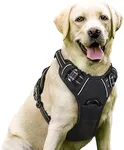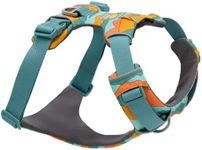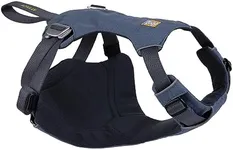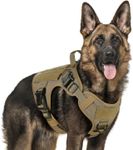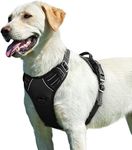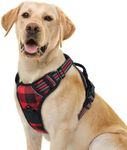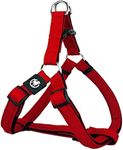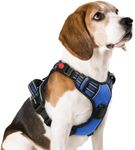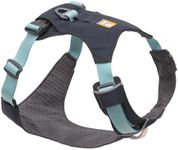Buying Guide for the Best Dog Harness
Choosing the right dog harness is important for both your dog's comfort and your control during walks or activities. A good harness can prevent strain on your dog's neck, provide better control, and even help with training. When picking a harness, think about your dog's size, breed, activity level, and any special needs they might have. It's also important to consider how easy the harness is to put on and take off, as well as how secure and comfortable it will be for your dog during use.Size and AdjustabilitySize and adjustability refer to how well the harness fits your dog and whether it can be customized for a snug, comfortable fit. This is crucial because a harness that's too tight can cause discomfort or chafing, while one that's too loose may allow your dog to slip out. Harnesses usually come in sizes like small, medium, large, and extra-large, often based on your dog's chest girth and weight. Adjustable straps are helpful for getting the perfect fit, especially for growing puppies or dogs with unique body shapes. To pick the right size, measure your dog's chest and neck, and choose a harness that matches those measurements with some room for adjustment.
Harness Type (Back-clip, Front-clip, Dual-clip, Step-in, Overhead)Harness type refers to the design and where the leash attaches. Back-clip harnesses have the leash attachment on the dog's back and are great for calm dogs or those who don't pull. Front-clip harnesses have the attachment on the chest, which can help with training and reduce pulling. Dual-clip harnesses offer both options for versatility. Step-in harnesses are put on by having the dog step into them, which can be easier for some dogs, while overhead harnesses go over the head and are secured around the body. Choose the type based on your dog's behavior and your preference for ease of use and control.
Material and PaddingMaterial and padding refer to what the harness is made of and whether it has extra cushioning. Common materials include nylon, polyester, and sometimes leather. Padding can help prevent rubbing and make the harness more comfortable, especially for dogs with sensitive skin or those who wear the harness for long periods. Lightweight, breathable materials are good for hot climates, while thicker, padded harnesses may be better for colder weather or extra comfort. Consider your dog's coat type, skin sensitivity, and the typical weather when choosing material and padding.
Security and Fastening MechanismSecurity and fastening mechanism describe how the harness stays on your dog and how easy it is to put on or take off. Common fasteners include buckles, clips, and Velcro. A secure harness is important to prevent your dog from escaping, especially if they are energetic or nervous. Some harnesses have multiple points of fastening for extra security. If your dog is wiggly or anxious, look for a harness that's quick and easy to fasten but still secure.
Reflective Features and VisibilityReflective features and visibility refer to elements on the harness that make your dog more visible in low light, such as reflective strips or bright colors. This is important for safety during early morning or evening walks, or if you walk near traffic. If you often walk your dog in low-light conditions, choose a harness with good reflective features to help keep your dog safe and visible.
